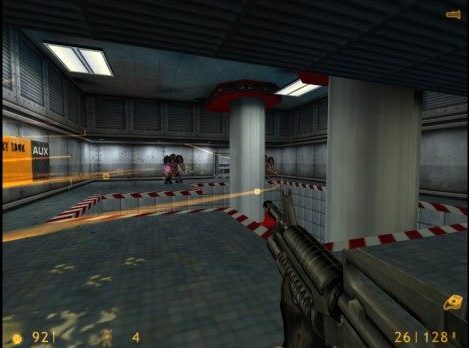What do you get when you combine Stephen King’s THE MIST, ALIENS, and Lovecraftian horror? HALF-LIFE, of course.
We’re going to go through a HALF-LIFE MARATHON. Every official computer HALF-LIFE game is going to be hypothesized, analyzed, and thoroughly tested. So let’s start with the game that started it all: HALF-LIFE.
For those of you who were either too young or never got around to playing it, HALF-LIFE is pretty simple to understand from a distance. You play as Gordon, a young physicist working for research facility Black Mesa. An experiment goes horribly wrong, opening a rift to an alien world and sending terrifying monsters into Black Mesa. Now Gordon Freeman must fight his way through aliens, marines, and a hazardous facility as he finds a way to stop the world of Xen from intruding on Earth in a puzzle-FPS game.
That’s all there is to it. Fortunately, that’s all you need.
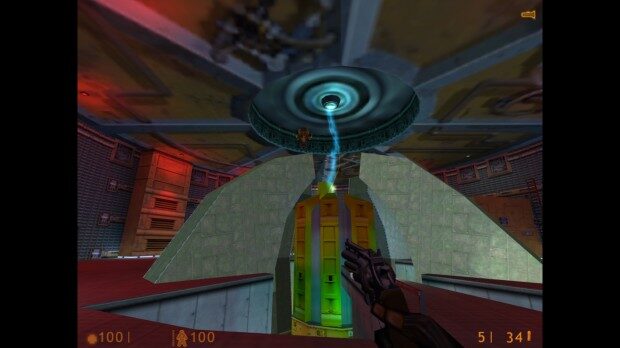
I know the word “puzzle” may scare some gamers, those with scars from games with incomprehensible clues or tiresome obstacles like “find the right switch” or “keep searching until you find the exit”. But let me assure you, there’s nothing to fear from HALF-LIFE. This style of gameplay has puzzles easy enough for anyone to figure out, yet satisfying enough for the most apt puzzle solvers.
What makes the puzzles work is that they’re simple to figure out at a glance, but might take several attempts to solve successfully. For example, you may see a ventilation shaft you need to get to, but it takes some brain power to figure out how you’re going to get across the electrified water and reach it. Again, simple to understand, tricky to solve. Yet, there’s not a moment when the “how?” feels too confusing or indecipherable. You just have to try until you get it right.
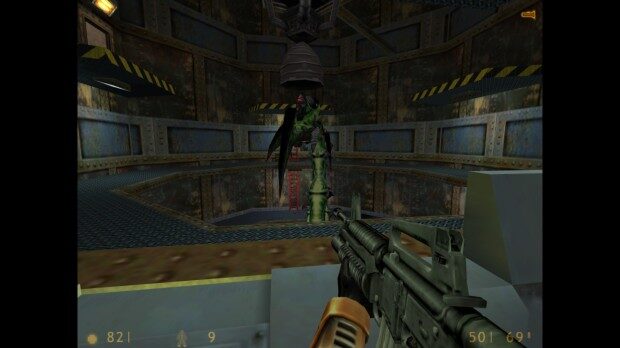
Fighting the hords of headcrabs, vortigaunts, marines, and countless others starts with a crowbar and quickly escalates to a variety of weapons, both of this world and seemingly out of this world. Ammo can fluctuate from being abundant in every breakable box to being extremely scarce, with the weaker guns having a seemingly endless supply and the heavy stoppers always having a shortage.
Like other smart games with an ammo scarcity, this creates some real strategy. How you want to deal with each creature and given situation is up to you. Every player is unique and will find their own preferred guns and ways of taking out the competition. There’s no right or wrong here, whether a trusty crowbar for the headcrabs or a shotgun for the vortigaunts. All that matters is if you make it out in one piece.
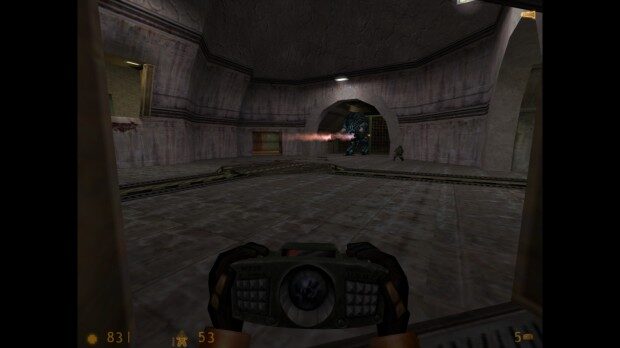
Unfortunately, while the puzzles are smart, the fighting isn’t as intelligent. It still works, and there are plenty other FPS games that have dated far worse. But the auto aim mechanic makes you wish you could aim on your own, and the AI marines just stand there and shoot at you while soaking up at least a clip’s worth of damage.
If there’s something else that’s extremely outdated in an otherwise timeless game, it’s the movement. For whatever reason, Gordon slides as he walks, as if it were HALF-LIFE ON ICE. Once you stop moving, you slide for a second and even the jumping can get mistimed if you’re not careful enough. This wouldn’t be too big of a problem if you weren’t constantly required to move carefully along a high ledge or jump along some crates.
The story and artistic values are much like the game mechanics: simple yet sufficient, holding up well despite some badly outdated parts.
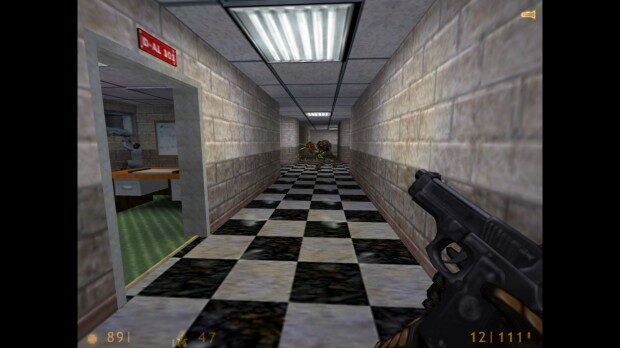
At its heart, HALF-LIFE is a B-movie. However, it never tries to be a B-movie, which is what makes it work. In fact, there isn’t really anything “so bad, it’s good” about the dialogue or plot. It just feels like a B-movie because everything’s boiled down to the simplest of terms. Physicists are zany, lab coat-wearing kooks; marines are stern, radio-chatting black ops; and the most pseudo-scientific explanations are given during silly expositions.
It’s got plenty of black humor, from security guards being chased around by aliens to scientists Wilhelm screaming as they fall off broken ladders and platforms. However, it never gets so silly or zany that it loses its tension and creepy atmosphere.
However, because the scientists all have the same stock faces, voices, and similar lines, nobody here feels like a unique or memorable character. Which is fine, but I never felt a single pang of pity over some unfortunate fellow exploding into meat chunks or dying some other horrible death. And without any strong interactions, Gordon Freeman goes from being a silent protagonist to one lacking any perceivable personality.
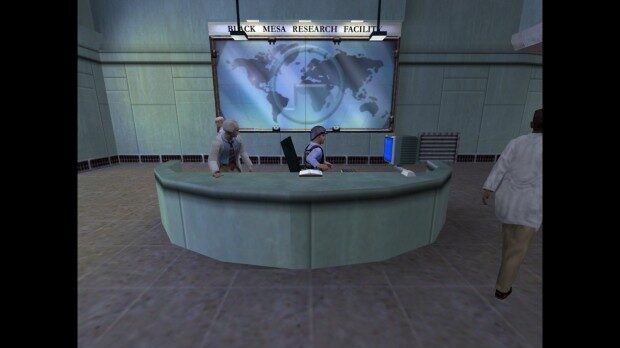
However, there’s not a single flaw here that keeps it from being an undisputed classic. It’s the thinking man or woman’s FPS. You can’t simply shoot your way out of every single scenario. You have to use your noggin and have a surprisingly fun time doing so.
I could write an essay or even an entire thesis on why the years of 1996-1998 were the most pivotal years for 3D video games. Titles like SUPER MARIO 64, FINAL FANTASY VII, GRAN TURISMO, GOLDENEYE 007, DUKE NUKEM 3D, TOMB RAIDER, RESIDENT EVIL, and of course, HALF-LIFE, defined and set the ground rules for modern video games.
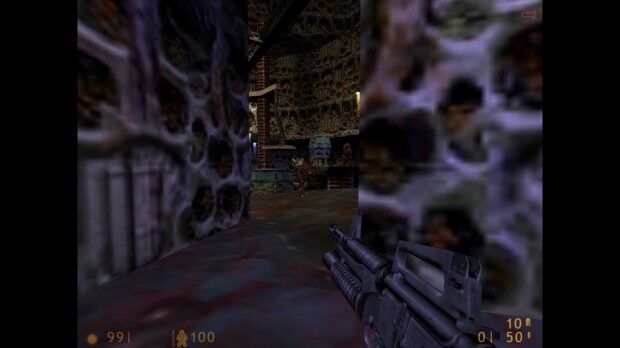
HALF-LIFE is in the DNA of many modern video games. Games ranging from DEUS EX to PORTAL to GONE HOME and even BIOSHOCK owe a great deal to this classic.
But this game shouldn’t be played out of an obligation to explore some video game history. It’s simply a fantastic video game, even after all of these years. For those playing it for the first time, I envy you. For those who have already played it, I assure you that the perilous facilities of Black Mesa to the otherworldly Xen will be just as memorable as your first time exploring it.
RELEASE DATE: November 8th, 1998 (North America)
PUBLISHER: Sierra Entertainment
DEVELOPER: Valve Corporation
ESRB: M (Mature)


